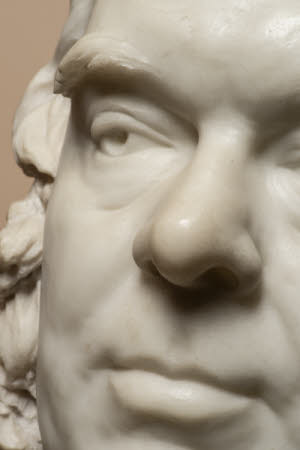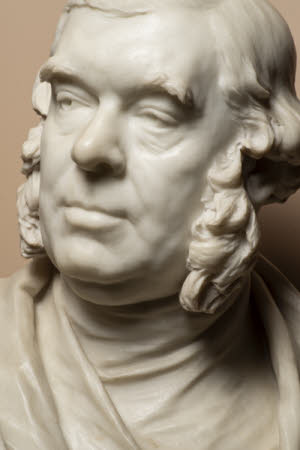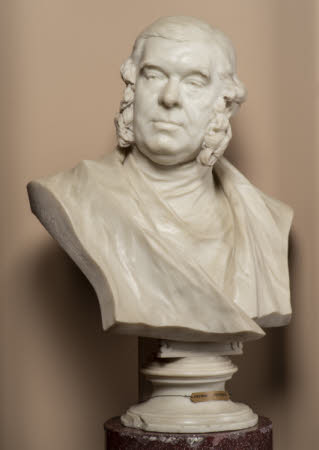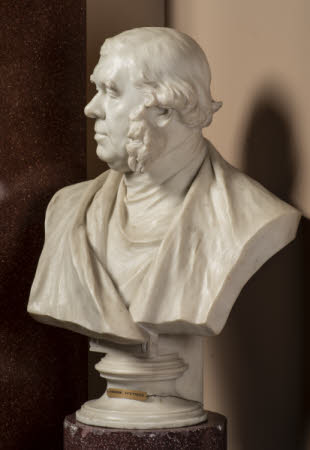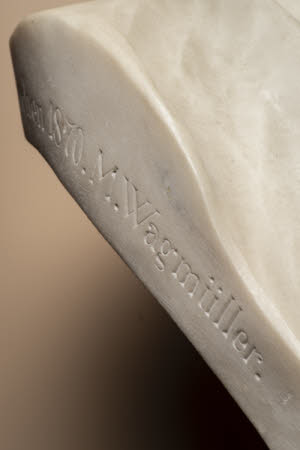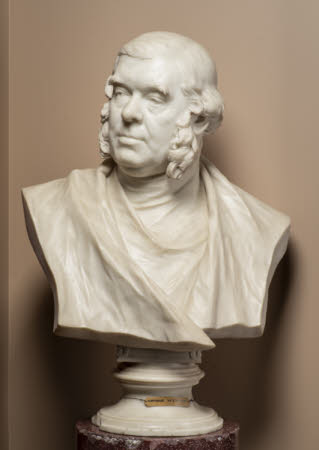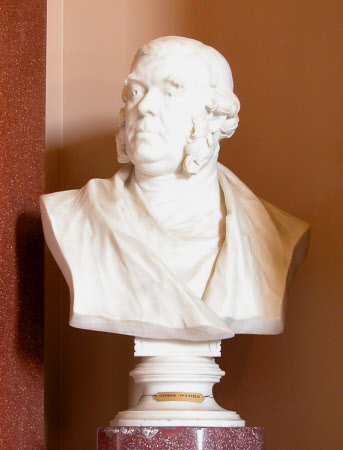Portrait bust of the railway contractor George Wythes (1811-1883)
Michael Wagmüller (1839 - Munich 1881)
Category
Art / Sculpture
Date
1870
Materials
Marble
Measurements
73 x 52 cm
Place of origin
Munich
Order this imageCollection
Ickworth, Suffolk
NT 852232
Summary
Sculpture, marble; Portrait bust of George Wythes (1811-1883); Michael Wagmüller (1839-1881); Munich, Germany; 1870. A portrait bust of the Victorian railway contractor George Wythes who, during a time of great expansion in the railways in Europe and beyond, built and financed railways in Britain, India, Argentina and South Africa. The great wealth that Wythes accumulated as a public works contractor passed down in part to his granddaughter, Alice Wythes (1875-1957), who became the 4th Marchioness of Bristol. Lady Bristol’s gift of a generous endowment made possible the deal under which the Ickworth and the greater part of its collections could be accepted by H.M. Treasury in lieu of death duties and transferred to the National Trust in 1956.
Full description
A marble portrait bust depicting the public works contractor George Wythes, made in 1870 in Munich by the sculptor Michael Wagmüller. The subject is shown with prominent sidewhiskers and craggy eyebrows, looking to his right, the eyes deep-drilled to give extra intensity and liveliness to the portrait. Wythes is dressed in a shapeless robe and with neckerchief at his neck. The bust is signed and dated on the right shoulder truncation. Set on a white marble socle with a blank nameplate with scrolled ends. This vivid sculpted portrait, every inch the successful Victorian entrepreneur, depicts one of the most successful railway engineers of the nineteenth century, whose fortune, albeit long after his own death, greatly contributed to the restoration of the fortunes of Ickworth. Wythes began his career as a railway contractor, firstly building railway lines in Essex and then, from around 1850 working in partnership variously with Joseph Jackson (died 1860), Thomas Brassey (1805-70) and Charles Henfrey as a contractor in India, where he made a substantial contribution to the development of the country’s rail network. He also built railways in Argentina and in South Africa, whilst continuing his business as a public works contractor in Britain. Wythes was, according to his obituary in the Proceedings of the Institution of Civil Engineers, almost universally admired for his industry, perseverance and concern for those working with and for him. Wythes became extremely wealthy and made his home at Bickley Park, near Bromley. In 1869 he also acquired the ancient Essex manor house Copped Hall for his only son George Wythes Junior(1839-1875), who lived there until his early death. It was George Wythes junior’s daughter Alice Frances Theodora Wythes (1875-1957) who in 1896 married Frederick William Hervey (1863-1951), later 4th Marquess of Bristol. Alice had inherited a good part of her grandfather’s wealth with which she was able to restore the Hervey family fortunes, but much later, in the 1950s, she was also instrumental through her gift of a large endowment in helping to enable the transfer to the nation of Ickworth and its collections in lieu of death duties. Michael Wagmüller was born in Regensburg in Bavaria and studied in Munich, firstly at the Industrial School and then at the Academy of Fine Arts. Between 1868 and c. 1872 he worked in London, where he received a number of commissions and also exhibited at the Royal Academy, but seems to have maintained his studio in Munich. This explains why the bust of George Wythes is signed as having been made in that city. During his few years in Britain, Wagmüller seems to have been very successful in obtaining commissions for portraits of dynamic men like George Wythes, thus he also made a portrait of Wythes’s sometime business partner Thomas Brassey (Hastings Museum and Art Gallery). His best-known work in Britain is his portrait of the biologist and palaeontologist Sir Richard Owen (1804-1892) in the Natural History Museum. Most of Wagmüller’s portrait busts are very similar in conception, with sitters looking to their right and with distinctive sharply-truncated bust sections. Jeremy Warren August 2025
Provenance
Part of the Bristol Collection. The house and contents were acquired through the National Land Fund and transferred to the National Trust in 1956.
Marks and inscriptions
Side of proper right truncation of bust:: München 1870. M. Wagmüller Muenchen 1870 - M.Wagmueller.
Makers and roles
Michael Wagmüller (1839 - Munich 1881), sculptor
